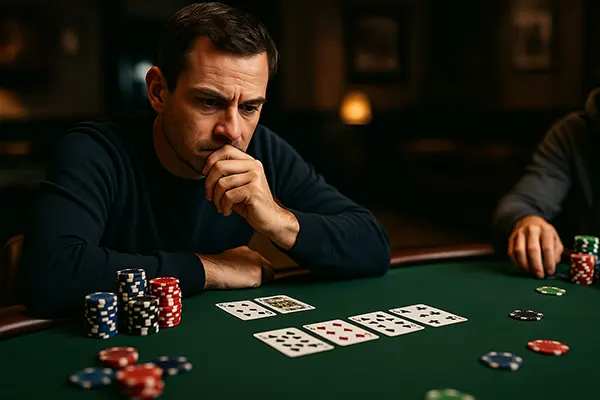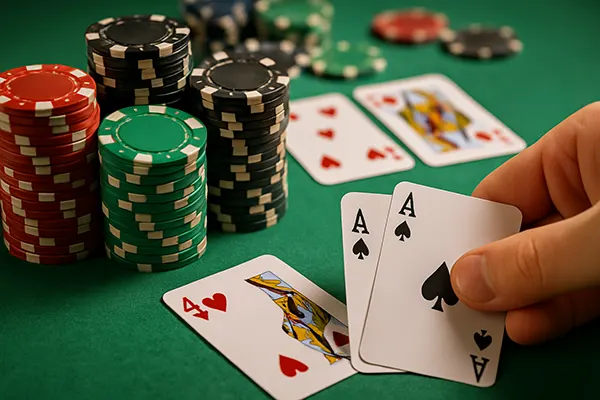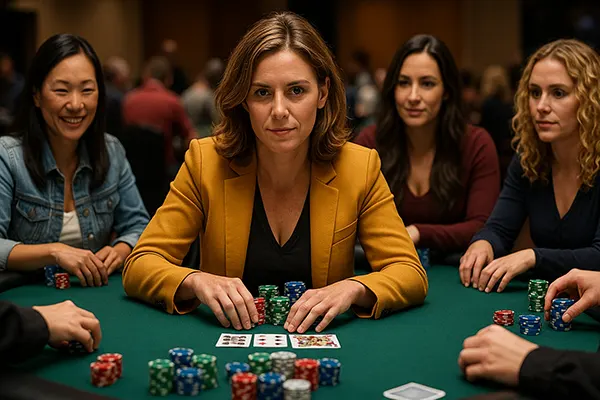
Training the “Poker Eye”: Exercises, Simulations, and Opponent Behaviour Patterns
Developing a sharp “poker eye” is an advanced skill that goes beyond learning rules or memorising strategies. It is about training the ability to read the board quickly, spot behavioural patterns, and detect subtle signals that might indicate the strength or weakness of an opponent’s hand. In 2025, professional players and enthusiasts increasingly rely on structured exercises, simulations, and video analysis to sharpen this instinct. This article explains practical ways to train this ability with clear steps and daily habits.
What the “Poker Eye” Really Means
The concept of a poker eye refers to intuitive awareness. It is the skill to notice the small changes in betting patterns, the pace of decisions, and the way opponents physically or virtually respond during hands. This perception helps in narrowing down ranges and anticipating possible actions.
Unlike general observation, the poker eye combines analytical skills with intuition. A player not only registers what is happening but also understands why it is happening. For example, a sudden pause before a call might reveal hesitation or bluffing behaviour.
In modern poker, where both live and online games are highly competitive, having a trained poker eye can give a decisive edge. It allows a player to see more than just the cards—it offers insight into the dynamics of each hand.
How to Identify and Develop This Skill
The first step is awareness. Players must learn to consciously pay attention to both board texture and human behaviour. By making deliberate notes about what they see, they gradually strengthen their recognition of patterns.
Another important element is reflection. After each session, revisiting specific hands and recalling what cues were missed or identified helps in reinforcing this skill. Journaling poker observations is often used by advanced players.
Over time, these observations become automatic. The poker eye is not about guessing but about accumulating enough real patterns to make educated predictions under pressure.
Exercises for Fast Board Scanning and Pattern Recognition
Training begins with visual drills. A simple exercise is to deal random flops and try to name all possible draws within seconds. This enhances speed and accuracy in evaluating board texture.
Pattern recognition exercises also involve categorising hands into groups. For example, quickly identifying whether a flop favours suited connectors or high pairs builds mental shortcuts for in-game analysis.
To make progress measurable, players can set a timer. Practising for short intervals daily improves both memory and focus, allowing the poker eye to become sharper with less effort over time.
Using Video and Pause Analysis
Video training is one of the most effective methods available. By watching professional games and pausing at critical moments, players can test their ability to anticipate decisions before seeing the result.
This approach forces the brain to simulate situations as if in real time. Instead of passively consuming content, the player actively engages with the material, making predictions based on observed behaviour.
Analysing body language in live poker or timing tells in online poker provides valuable feedback. Over repeated sessions, this method enhances both accuracy and confidence in reading opponents.
Simulations and Short Daily Micro-Trainings
Modern poker training software in 2025 offers simulation environments that replicate real tables. These tools generate scenarios where users must respond quickly, helping to improve instinctive decision-making under pressure.
Simulators often include statistical tracking, which allows players to measure their accuracy in recognising board strength or opponent tendencies. This makes progress more tangible and motivates consistent training.
Beyond software, simple micro-trainings are effective. Setting aside five minutes a day to practise quick flop evaluations or review betting sequences ensures steady improvement without overwhelming the player’s schedule.
Integrating Poker Eye Training into Daily Routine
Consistency is more important than intensity. Small but regular exercises create long-term skill retention, while irregular long sessions often lead to fatigue and weaker results.
Building a habit around poker eye training is easier when linked to existing routines. For example, dedicating a few minutes after breakfast or before bed makes practice automatic and sustainable.
By 2025, many players combine live practice, video analysis, and simulation apps, turning poker eye training into a structured discipline. This balanced approach ensures skills remain sharp and adaptable to different game formats.


